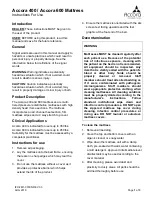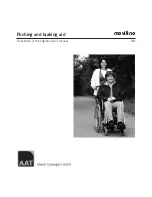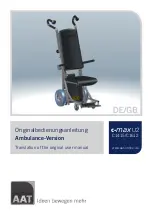
4
Etac / Cross 6 / www.etac.com
Transport in vehicles
The product is crash tested and approved according to ISO 7176-19
(see section
“CE marking, tests”
in the manual).
Etac recommends in the following order:
1) The user moves to a vehicle seat and uses the vehicle’s three-point
belt during transport. The wheelchair is then placed securely in the
luggage compartment or in the back seat so that it can’t overturn
or roll.
•
The wheelchair should primarily be placed in the
luggage compartment.
•
If the wheelchair is placed in the back seat, make sure
it can’t overturn or roll. If possible, secure it with the
car’s seat belt.
2) The wheelchair is anchored forward in the vehicle according to
this manual, the user uses a separate three-point belt that is
anchored in the vehicle. This is the way the wheelchair is tested
and approved according to ISO 7176-19.
Anchoring
•
Rear transport bracket must be used
•
The anchoring device must not be pulled through
the wheels or around the back posts.
•
See section
“CE-marking, tests”
•
Accessories that can be detached without tools must
be removed and clamped
•
If head support is mounted other than with head
support bracket 3A, cross bar must be used
3) Pursuant to Directive 2001/85/EC, Annex VII, point 3.8.3. in
vehicles, there may be specially marked wheelchair spaces that
allow transport with the wheelchair facing the direction of travel.
If this mode of travel is used, the user/attendant must be active
in the ride, be prepared for sudden movements and have the
ability to maintain a safe sitting position throughout the transport.
The user’s disability must not be to such an extent that he cannot
hold on himself and the wheelchair to the handle mounted in the
vehicle in the event of changes in speed or direction.
•
The parking brake must be used
•
Anti-tip guard must be folded down
•
Add-on options/accessories that can be detached
without tools must be removed and clamped.
•
A properly set head support must be used
•
Positioning belt should be used
2. Safety





































